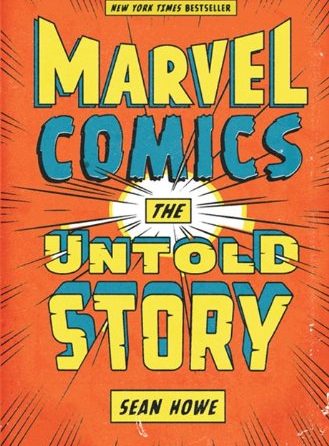I’m an ecologist and a limnologist. I conducted environmental research and investigations for over twenty years; as senior scientist I investigated and reported on environmental phenomena to both the scientific and lay community. I find it interesting when something I’ve been reporting on for over twenty years finally makes it to the mainstream; like it’s news. So, when a New York City cab driver turned to me recently and lectured me on global warming, I nodded slowly in mute agreement and didn’t tell him that I’d been studying it for over twenty years.
There’s an interesting phenomenon going on out there right now. Maybe you noticed it. Economists are all abuzz with it. Social scientists and psychologists are gossiping to each other about it: the exponential growth curve—or “S” curve—that we are currently in the middle of is fueling our food shortages, oil shortages, inflation, economic collapses, tensions between countries, population rise, and everything else to do with humanity on this planet.
Ecologists have long been studying this biological—and sociological—phenomenon in nature. The typical “S” curve has three parts to it: 1) the beginning, where it lags and shows a slow rate of rise; 2) then the steep rise of exponential growth; and 3) the eventual leveling off when the supposed carrying capacity is reached. There is another kind of curve, the “boom and bust” curve that instead of plateauing at the end toward sustainability, plummets just as steeply back to or below levels in the first step (that’s a whole other topic and blog post).
Why am I talking to you about this? Because it has everything to do with your writing. The publishing industry is currently experiencing its own version of the “S” curve and the “boom and bust” curve (for traditional publishing houses, I’m afraid). We are currently witnessing a growing influx and legitimization of self-publishing and Indie publishing. Thanks to a few crazy success stories and the new affordable paradigm of POD digital publishing, publishing hasn’t been easier. This new model heralds an unprecedented renaissance of self-expression and creativity, shared worldwide.
Consider these statistics: in 2009, Publishers Weekly reported over 750,000 self-published/micro publisher titles, over twice the number of traditionally published titles that same year. The figures (I couldn’t find more recent ones—let me know when you do) are assuredly much higher today. From 8,000 to 11,000 new publishers currently enter the field every year and most of them are self-publishers or small indie publishers. Seventy-eight percent of titles brought out come from a small press or self-publisher. Fifty-twopercent of books sold are not sold in bookstores; they are merchandised through mail order, online, in discount or warehouse stores, through book clubs, and nontraditional retail outlets.
As a function of this renaissance of self-expression, the number of books hitting the market is rising at an exponential rate. There’s that “S” curve again. Check out Amazon: they have over seven million books on their virtual shelves. And now, thanks to their new policies, it’s growing exponentially. What does this mean for you?
It used to be that the screening for excellence in books occurred behind the closed doors of prestigious publishing houses; if a book wasn’t deemed worthy of the standards or didn’t fit the style of that publishing house (with its own reputation), it was not accepted and didn’t see the light of day. The rejected and dejected author often went back to the drawing board to improve their artistic work before resubmitting. That was then. Now, works are published without prejudice in the open for the world to see. It used to be that writers complained of their writing being “sterilized” by the editor of the publishing house, which was only conforming to the house style and their vision of what is salable. Now, authors wishing for creative control simply self-publish.
Self-publishing has created a kind of anarchy in publishing; anything can be published (so long as you have the money). And while this is incredibly liberating for authors around the world, it is also incredibly dangerous. Here’s why: once you publish your material, it will be out there for the world to see forever. That means FOREVER. It becomes a permanent record of your standards of excellence and taste; essentially a statement of who and what you are. You had better be proud of it then and for a very long time. It is no longer the responsibility of the publisher to determine publishing worthiness; the onus is on YOU, the writer. What will you do to ensure the best possible work for your readers?
Competition will become ever more fierce AFTER you’ve invested and AFTER you’ve published; your book will then compete with a world of self-published authors in addition to those published by traditional publishing houses. In order for your book to rise above the massive competition, it’s more important than ever to produce a concise, clean, clear, polished-to-perfection manuscript that you are proud of. With an awesome cover (see my July 2013 post on book jacket covers).
Self-published author Dave Bricker shares that, “Poor editing is the number one complaint heard from critics of the independent publishing industry. Though the standards of mainstream publishing houses are overrated, I’ve read many indie books where spotty spelling and lack of polished prose present barriers to enjoyable reading. Unedited authors sully the publishing waters for the rest of us.” He’s talking about poor packaging. Poor manuscript presentation can seriously undermine an author’s chances of being taken seriously. A good reputation is earned slowly and tenuously; a poor reputation, like the plummeting “boom and bust” curve can end a writer’s career.
Why not produce a pressure-tested product that has already withstood the scrutiny of a professional critic whose standards are much higher than those of the average reader?” says Bricker. “As with your typesetting and cover design, the best route to success is to engage a professional.” He is right. If you want to be treated as a professional (by readers) then be professional and engage professionals.
What do professional editors do?
Editors aren’t proofreaders, although this might be one task in several they can provide. Most editors are what are variously called structural or story editors; someone capable of commenting on the work objectively and with competence. Is the story believable? Are there unexpected temporal jumps or unexplained threads in the narrative? Are the article’s assertions properly supported? As with affairs of the heart, it’s easy to understand the problems of others and difficult to acknowledge what we’re too close to see—and if you think writing isn’t an affair of the heart, you haven’t started your book yet. Get that third-party perspective.
No one likes to be edited. Of course you feel protective of your material; that is natural. You’ve put so much into it; how could a stranger possibly understand and treat it with the respect it deserves?
Professional editors are accustomed to interacting with authors in a mutually respectful relationship. Editors have to make a living, and they would quickly find themselves unable to if they treated their clients in any way other than professionally and respectfully. A professional editor is more likely to serve your true interests in getting published than a friend or relative who likely knows little of “storytelling”, plot and character; and may side-wind you with inappropriate advice or platitudes. In fact, showing your work to a friend or relative may be the reason why you have decided that you “don’t like to be edited.” Before I was published, I once showed my work in progress to my husband, who was too close to the subject and its writer; he made very unprofessional remarks that were more damaging than helpful. If you go with a professional you will not have this problem.
Throughout history, authors have relied on their editors to be their sounding boards, to represent the eye and ear of the reader, and to help bring a viewpoint that can’t arise spontaneously in the author’s head. In the past, the traditional publishing house has typically provided this service. Many publishing houses now expect the writer to provide a manuscript that has already been edited. Indie and self-publishing scenarios leave the onus on the writer.
Two of the most common excuses that authors find for not engaging a professional editor include cost and venue.
I can’t afford an Editor: can you afford to put out a book for the world to see that is full of mistakes? If you aren’t serious enough about writing and publishing to invest in your career with good guidebooks, courses & workshops and coaching and editing, then perhaps you should rethink your career. No one would think twice about training and getting professional help to become a successful nurse or pilot. Writing is the same. For it to be successful, it requires investment. Especially if you are considering self-publishing.
Self-published author Dick Margulis reminds us that “Self-publishing is a business – the publishing business – and if you hope to succeed in it, you have to manage it like a business. You have to look at your skill set and decide which of the many tasks associated with publishing you are suited to doing yourself and which can be done more effectively and more economically by others. Your time has value, and you have to decide how it is best spent.”
It’s Just an E-Book: a common mistake, particularly with digitally published books, is the notion that because you haven’t invested in typesetting or printing you can fix the mistakes later. That is a poor notion. And a risky approach that smacks of laziness. Letting your readers find your mistakes for you is a poor show and will hurt your reputation as a writer (no matter who publishes you). With books, no matter what format, the first impression is critical. For some readers that may be the first and last time they meet you and your work. Make sure it counts. Word gets around pretty fast on the Internet. Ensure that it’s a good word.











2 Comments